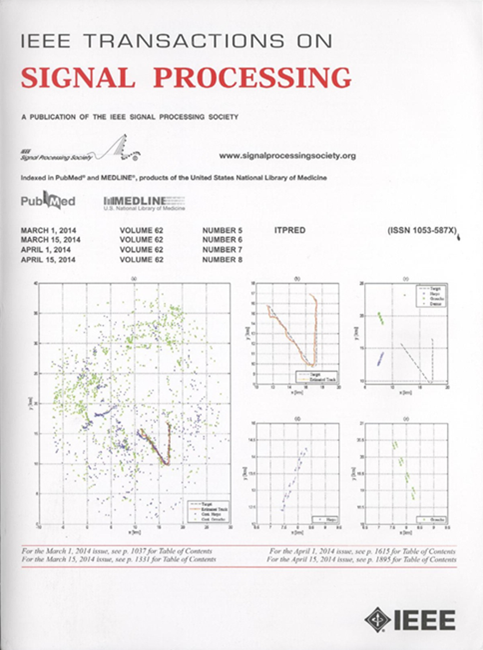基于线性-非线性混合预编码的双功能雷达通信系统低复杂度CRB优化
IF 4.6
2区 工程技术
Q1 ENGINEERING, ELECTRICAL & ELECTRONIC
引用次数: 0
摘要
提出了一种采用线性-非线性混合预编码(HLNP)的双功能雷达通信(DFRC)系统的波形设计技术。HLNP信号是通信符号的线性预编码的叠加,可以实现传统的相干解码和非线性预编码辅助信号,引入额外的设计自由度,可用于提高系统性能。我们的设计目标是获得准确的到达方向(DOA)估计和满意的波形模糊特性,因此我们优化了DOA估计的Cramer-Rao界(CRB)和波形相似度度量的加权和。为了同时实现在所选数据速率下的有效通信,我们设置了通信sinr的下限,并且为了便于实现,我们限制了每个天线的总发射功率、每根天线的功率和峰均功率比(PAPR)。我们采用连续凸近似来解决由此产生的非凸设计问题,同时利用可行点追求来提供可行的初始点。为了降低计算成本,我们在设计技术中引入了子块和零空间变体。仿真结果验证了该算法及其变体的有效性,并验证了它们相对于常规非线性预编码方案的性能优势。本文章由计算机程序翻译,如有差异,请以英文原文为准。
Reduced-Complexity CRB Optimization for Dual-Function Radar-Communication Systems Using Hybrid Linear-Nonlinear Precoding
This paper proposes a waveform design technique for dual-function radar-communication (DFRC) systems that employ hybrid linear-nonlinear precoding (HLNP). The HLNP signal is a superposition of linear precoding of the communication symbols that enables conventional coherent decoding and a nonlinearly precoded auxiliary signal that introduces additional degrees of design freedom that can be used to improve system performance. Our design goal is to obtain accurate direction of arrival (DOA) estimation and satisfactory waveform ambiguity properties, and hence we optimize a weighted sum of a Cramer-Rao bound (CRB) on DOA estimation and a waveform similarity metric. To simultaneously enable effective communication at the chosen data rates, we set lower bounds on the communication SINRs, and to facilitate implementation, we constrain the total transmission power, the per-antenna power, and the peak-to-average power ratio (PAPR) on each antenna. We deploy successive convex approximation to solve the resultant nonconvex design problem, while leveraging feasible point pursuit to provide a feasible initial point. To reduce the computational cost, we introduce sub-block and null space variants of our design technique. Simulation results verify the effectiveness of the proposed algorithm and its variants, and validate their performance advantages over regular nonlinear precoding schemes.
求助全文
通过发布文献求助,成功后即可免费获取论文全文。
去求助
来源期刊

IEEE Transactions on Signal Processing
工程技术-工程:电子与电气
CiteScore
11.20
自引率
9.30%
发文量
310
审稿时长
3.0 months
期刊介绍:
The IEEE Transactions on Signal Processing covers novel theory, algorithms, performance analyses and applications of techniques for the processing, understanding, learning, retrieval, mining, and extraction of information from signals. The term “signal” includes, among others, audio, video, speech, image, communication, geophysical, sonar, radar, medical and musical signals. Examples of topics of interest include, but are not limited to, information processing and the theory and application of filtering, coding, transmitting, estimating, detecting, analyzing, recognizing, synthesizing, recording, and reproducing signals.
 求助内容:
求助内容: 应助结果提醒方式:
应助结果提醒方式:


